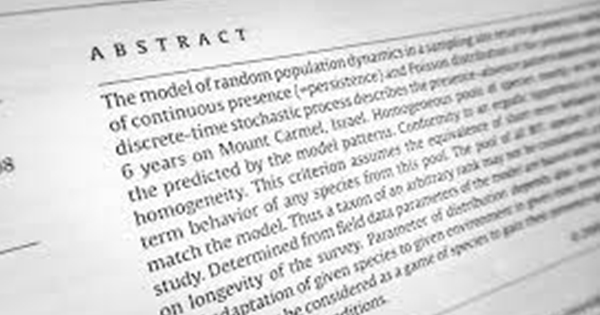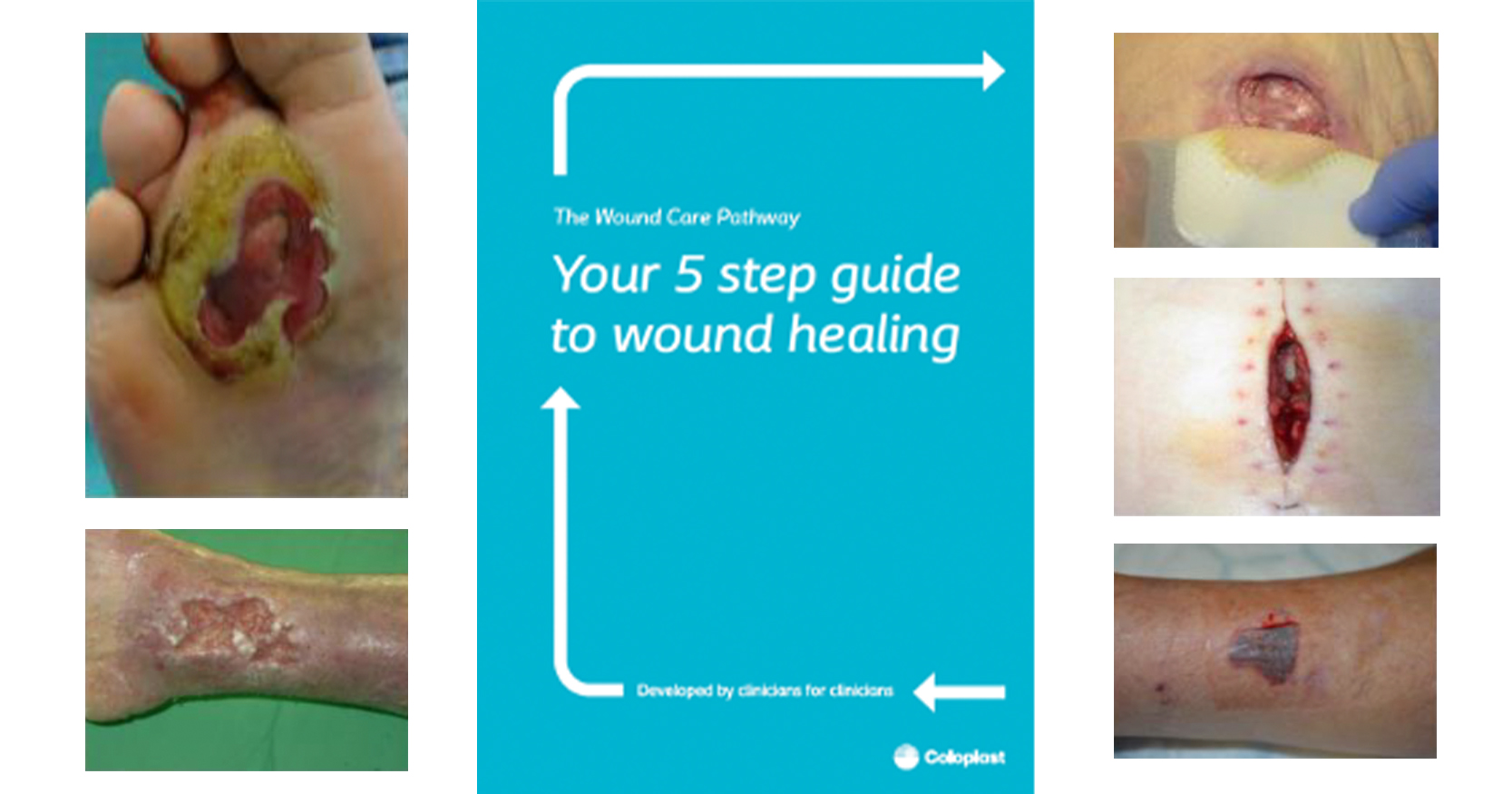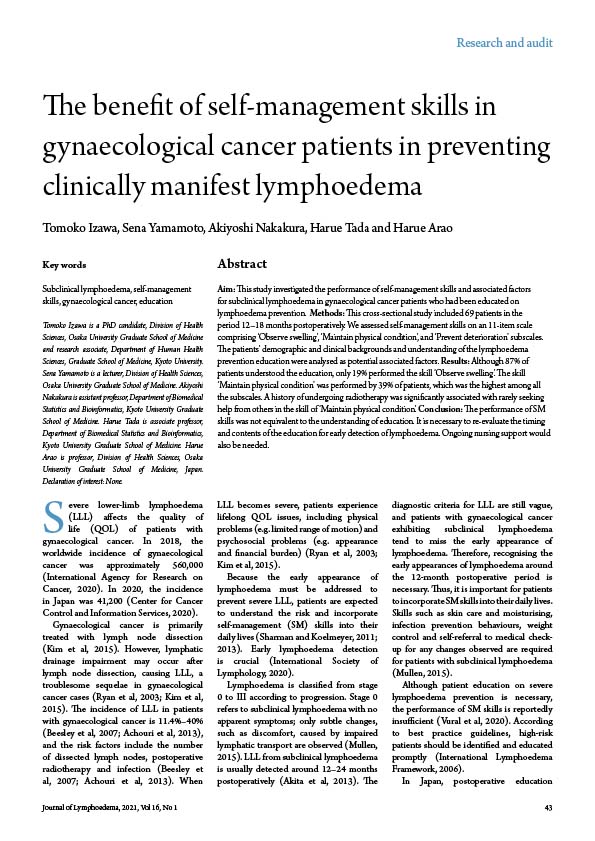Throughout our lives we learn from those around us – our parents, teachers, friends and colleague – through what we discuss, hear, see and read. These experiences make us what we are today, but along the way perhaps there were some times when we have doubted or questioned the information, its sources, its accuracy and relevance to ourselves and the benefits that this information will provide.
However, in the medical field only those well experienced and qualified should be the ones you listen to or whose advice you act on – right? Well, the information they provide should always be the basis of any actions in terms of your health and wellbeing – and, if you have it, your lymphoedema and any co-morbidities associated with it.
For a patient, at risk of or with lymphoedema, medical opinions and clinical trial outputs and associated websites are not always able to provide the information and evidence to make a firm, informed decision in terms of what you ideally need. Sometimes we want to reach beyond the medical horizon for information and advice, sometimes we reach out to others in our field who have more experience with the patients with the problems or issues in question, and sometimes we use our prior experience and knowledge of diagnosing or treating patients with similar problems to the one in front of us now. On other occasions, we might link one patient with another to tell of their lived experience of what they are going through or have gone through. This often can be an eye-opening and valuable experience.
Around the world, we have many legitimate health systems/government agencies, and professional and patient groups and patient advocates, which aim to direct us towards suitable information sources to help with any condition the patient may have. For example, in South Australia we have the Governmental Health “Pathways” Guide for general practitioners, we have the Lymphoedema Association of Australia, who promote and provide information for patients, and we have an overarching Australasian Lymphology Association, from which clinicians, therapists and patients can seek guidance and recommendations for best practice and models of care. But at a more local level, sometimes the guidance and information might be at variance to that of the overarching statements, and so there can often be confusion or uncertainty.
The question commonly arises among all of us: which source do we use, which is most accurate and most appropriate for my patient?
Furthermore, we read about clinical trial outputs and other research about the outcomes of various strategies and interventions from sites such as PubMed, and these may be at odds with other existing recommendations and earlier research.
So, it all can become rather confusing, sometimes leading to no action or the wrong reaction, and thus affecting advice to the patient.
The basic problem here is often that while we are specialists, clinicians diagnosing and making recommendations about the treatment of lymphoedema and the types of treatment (whether surgical or conservative), do not have enough training or awareness of the lymphatic system, and issues associated with it – such as what genetics may impose on its functioning, the impact of other risk factors (such as obesity, diet, activity), and the optimal pathways for treatment suggestions.
Patients with good outcomes through good advice from a clinician will recommend that person to other patients through patient networks. And so, through experience, they become an ‘expert’ in the area of the lymphatic system, its structure, functioning, reasons for its failure and how to remedy the problems.
We may then present that at a professional association meeting so others can learn from us. We may also present at groups who train therapists with the goal of empowering patients to best treat and manage their condition. But there still remains a basic issue for many clinicians: a lack of education in the basic medical education programmes and a lack of continuing professional development programmes to learn in a coordinated and informed manner.
Let’s consider the modes of information delivery that we all use and learn from, but which at times we may not consider or know their appropriateness for us or the patient, or their accuracy with respect to the patient’s situation/condition. Nevertheless, some are very beneficial and appropriate, especially information that comes from reputable sources.
The first and most personal is that of patient-to-patient advice. Bowman et al (2024) reported on the benefits of this, following a patient-to-patient advice workshop. Why patient-to-patient advice? They stated: “People already have within them the wisdom and creativity to confront even the most difficult of challenges; that the answers we need are available to us and that we are wiser together than when alone.”
The outcomes from the workshop were strong and included advice such as be your own advocate, keep being curious and learning, connect with others, listen to oneself and do what one feels best for the body and still live your life.
Taken from the recent workshop is the point of ‘keep being curious and learning’. Not only do we seek advice from the web, but also a trending focus of information provision is artificial intelligence (AI).
How do we know the information we gain from AI is accurate, appropriate, and helpful for our condition? That comes from knowledge about AI, how it sources information and how it uses this to present what one might call a fait accompli to us about our condition or situation, or (if we are a professional) about the patient for whom we are trying to gain the best outcomes.
Mangion and Piller (2024) indicated that generative AI and ChatGPT can be used as a chatbot for information about chronic oedema/lymphoedema. Digital health can assist all of us by allowing easy, convenient access for patients to a range of information about their condition/situation. But what are its limitations when dealing with a complex clinical presentation such as lymphoedema, with associated co-morbidities, in terms of suggesting directions to take to improve outcomes?
Certainly generative AI and ChatGPT or similar chatbots are going to help improve knowledge and awareness, and perhaps lead to improved self-care in chronic conditions such as lymphoedema, especially for those in rural or remote locations, where access to therapists and other medical care is poor. However, there is still at the moment a danger in an assumption that it is accurate, appropriate and actionable in terms of the patient taking more control of their condition (ideally still in collaboration with their therapist or other health professional), but it is on its way – so the more we know about its strengths and limitations, the better for all of us.
What is critically important for all of us to be aware of, is that when we use it, the chatbots can only reply based on what we ask. Therefore, poorly worded questions and misspellings will lead to poor information. Even if we ask the right ones, the information response still may not always be reliable or accurate (Ayers et al, 2023). But AI and its language models may soon become part of our virtual digital healthcare system. We need to be well prepared, but at the same time we must still be involved in the personal side of things, linking into patient groups, going to education and awareness sessions and absorbing the practicality and importance of patient-to-patient advice!





